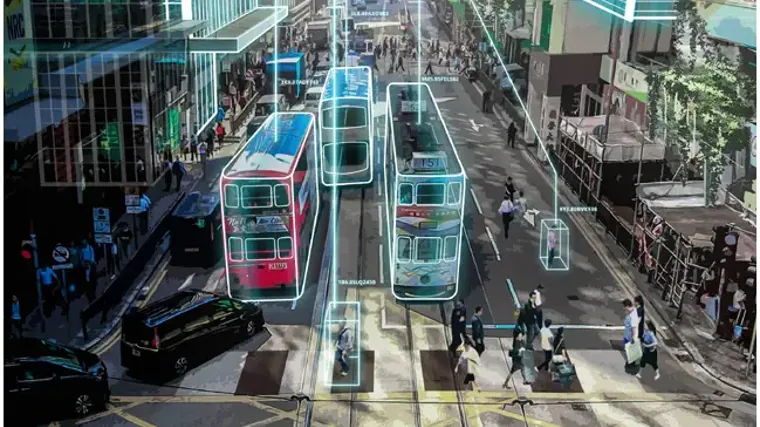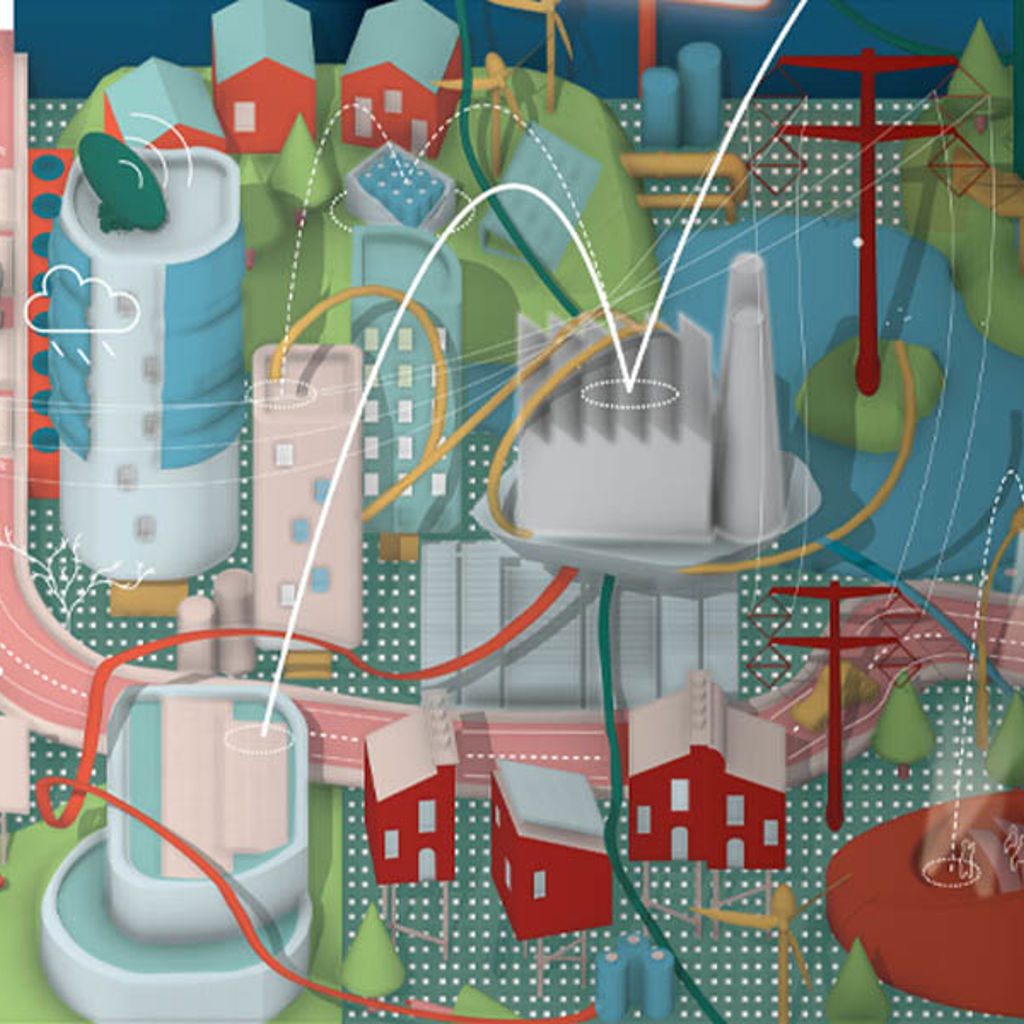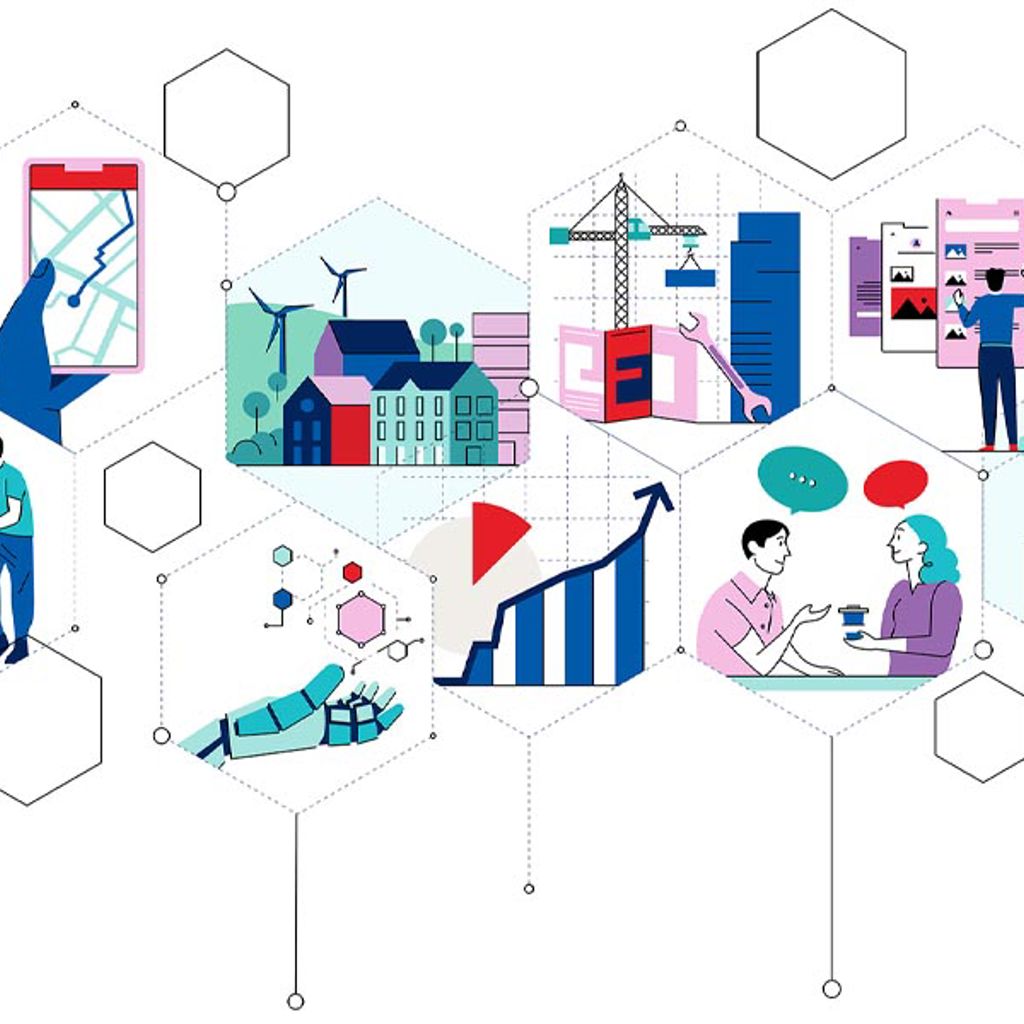Can virtual design and construction (VDC) transform the efficiency of today’s building process?
VDC offers a unified digital methodology across a built environment project's entire lifecycle. Given the clear benefits for designers, operators and managers, we believe it’s time to expand the use of this approach.


Jon Berkoe
Associate Principal
Last updated: June 2025
Some 20 years ago, the built environment industry began embracing Building Information Modelling (BIM). Architects and engineers started to move from two-dimensional blueprints to a virtual collaborative environment for creating and delivering designs, ushering in a new digital age for the industry in the process.
Now, uniting the design and construction phases of a project within connected digital workflows—known as Virtual Design and Construction (VDC) in the Americas marketplace—promises to activate a similar transformation. While outside North America, an integrated digital approach from planning and design to operational management is more common, the American construction industry has been less proactive in reaping the benefits of this practice. VDC’s connection of digital tools, a shared platform for project management, and real-time collaboration across the entire lifecycle of a project can yield considerable time and cost savings, greater precision, innovative solutions, and deeper sustainable outcomes.
The built environment’s use of digital technology in the Americas has been relatively tactical, and the industry hasn’t fully tapped into the holistic potential of design-construction integration. When used, it is often used to solve discrete problems or perform isolated tasks. This approach can yield important benefits but often with limited sustainability, scalability, and consistency. By unifying digital tools for a project, VDC provides a level of access to data and processes across all design and construction phases that yields significant efficiencies and captures synergies. It unlocks a strategic vantage point that enables high-level direction for advancing the project as a whole and over its lifecycle.
Project owner benefits
Nevertheless, as with early resistance to BIM adoption among designers, the built environment industry has been hesitant to embrace a comprehensive VDC approach to projects. Some project developers more familiar with a linear project approach may assume they have less control with a shared digital platform. In fact, VDC’s ease of access to project information bestows more control and decision-making power to project owners.
With its ability to integrate data from hundreds of suppliers, partners, consultants, and organizations, VDC is especially advantageous for complex, mega-scale projects. But companies of all sizes can benefit from its lower cost solutions, such as reality capture technology to more efficiently obtain as-built measurements of a site. These “digital surveys” capture millions of geo-spatial points with four- to six-minute scans for an accurate site picture, greatly increasing construction efficiency, accuracy, and quality, and reduces the need for rework.
An end-to-end process
When data captured from the physical world is integrated with a design/construction BIM model that includes live data, a Digital Twin is formed. The model’s combination of physical and live data enables it to be used continuously beyond construction to the asset’s operations and maintenance, ensuring enhanced performance. For a building, this might result in a more comfortable environment with better air and lighting, among many other benefits. Improved performance for a bridge or rail project may translate into better maintenance and lower related costs.
The end-to-end role of VDC is becoming more commonplace. Increasingly, building and infrastructure owners expect to be provided with a Digital Twin for managing their assets at the conclusion of their projects. Additionally, the ISO 19650 standard, an international standard for information management, requires BIM models to include a post-construction operating model. Arup currently has approximately half a dozen transportation projects in the Americas that require adherence to ISO-19650.
Collaborating across a common data environment
Whereas traditional building design and construction is characterized by a linear flow of siloed activities, the linking capability of VDC profoundly changes how projects are executed. In the past, there was a disconnect between what a design engineer would deliver to a builder and the kind of information the builder needed for construction and fabrication. VDC now bridges that gulf with one multidisciplinary building information model, saving all project players considerable cost and time.
While VDC inherently allows for a more collaborative work process, a carefully designed digital strategy ensures this will happen. For a rail extension project in Canada, we used our proprietary online platform, Fuse, to centralize the project’s data and maximize its value. Here, geospatial analytics, data visualizations, and workflow management tools are grouped and optimized for each stakeholder group. This allows decision makers to quickly find and track the performance of project KPIs, such as design reviews, community engagement, construction progress, permitting, property data, environmental certifications, and other critical project data.
As a major Canadian infrastructure project, development will span many years. Therefore, Arup’s digital delivery approach also provides data continuity across the project’s different contracts and phases. With all data contained in Fuse, as work matures for one phase, historical information is archived, and active information is transposed and migrated for new contracts.
Creating lower-carbon solutions
A virtual digital platform is especially valuable for advancing sustainability by allowing designers and engineers to use powerful generative algorithms to test alternatives. Leveraging automated workflows, the model can perform comprehensive initial design assessments to uncover opportunities for reducing carbon emissions. By using energy analysis and daylighting simulation, for example, designers can identify carbon reductions within a project’s structure, façade, and MEP as well as through acoustics and lighting.
Digital delivery can also advance the mammoth task of tracking and reporting sustainability for a project, such as managing the process for a project’s targeted Envision Gold certification. We used Fuse, which greatly expedites processes entailing a collective team of engineers, contractors, and various stakeholders who will need to review, comment on, and approve hundreds of documents across the different phases of large-scale projects.
Rapidly evaluating options
For a major transit tunnel project, we used VDC to determine the optimal platform arrangement. While the original tunnel concept called for a vertical stack platform arrangement, Arup was able to evaluate the costs and construction schedule of the tunnel plan and relative to other design options using VDC. Our analysis showed that the stacked option wouldn’t allow various types of construction to occur concurrently, expanding the schedule and costs.
We used VDC to explore innovative alternatives. Using a rapidly deployed combination of a BIM Common Data Environment and Fuse, we were able to space-proof the design, evaluate the site changes, and cross-check the expected tunnel fire safety performance for a side-by-side platform design that costs less and is faster to construct.
To help the client understand the new option, we used VDC to create a 3-D visualization to illustrate the passenger experience and pedestrian movement. Stakeholders across the project were then able to quickly review this major alteration in design and reach a consensus to move forward with the revised approach.
This level of strategic agility is possible when the project leader, along with the project management team and owner, optimizes VDC’s capabilities, directing and overseeing the digital model with a project- and client-driven focus. From this vantage point, this leader has a holistic view of the project across phases and disciplines and can advance robust workflows, high-value deliverables, innovation, stronger sustainable outcomes, and considerable time and cost savings.
Expanding design potential
VDC is continually evolving with new technologies that increase functionality and offer the capability to extend and expand the use of data at all stages of the project. Even as a model amasses quantities of new information and tools, the data remains accessible and visible, providing stakeholders with the capacity to identify new approaches and challenge existing assumptions. And with the increased incorporation of intelligent AI-driven systems, VDC is poised to further enrich and advance how we design and build, bringing greater value to the built environment.
Get in touch with our team
Innovating with digital and data
We use data to create powerful tools, efficient solutions and valuable insights for our clients.




